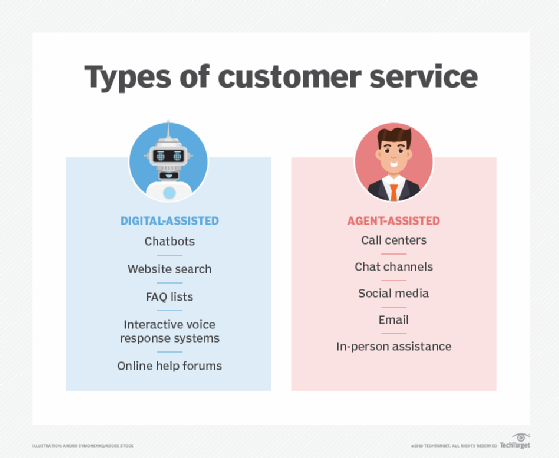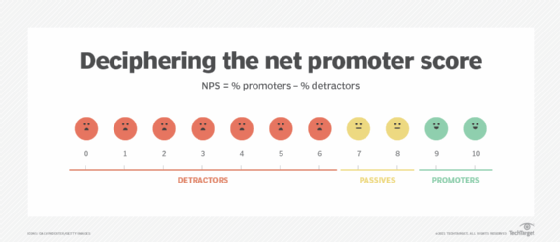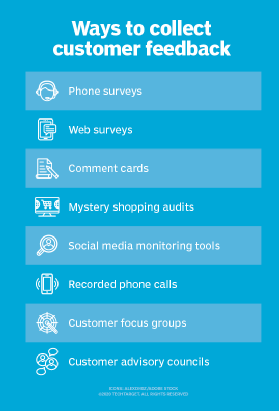10 customer service best practices to follow
As customer service evolves into a multidimensional force, agent training and experience, performance analysis, virtual assistance, customer sentiment and net promoter scores rule.
Companies should realize that delivering a great product is not all that matters to customers. Good customer service can ensure customer loyalty. Without repeat customers, revenues are lost to the competition. That's why successful companies invest time and money into providing and improving customer experiences, a critical part of which is comprehensive customer service programs.
Depending on several factors, including industry, product, customer profile and corporate culture, different companies will devise different strategies to maximize multiple channels of communication that are available to customers.
Customer-centric service
Most everyone can recall a bad customer service experience -- whether it was a rude server at a restaurant, being placed on endless call waiting or having trouble returning a product without a sales slip even though the transaction details are on file. But some organizations have earned a reputation for delivering positive customer experiences and excellent customer service -- among them, Amazon, Apple, Chick-fil-A and Zappos. Their recipe for success is no secret and includes many of these 10 customer service best practices.
1. Put the right person in the right seat
When it comes to staffing the helpdesk and customer service positions, choose individuals that best fit the profile for a customer service role. Those traits include empathy, compassion, patience, effective listening, respectfulness and, if necessary, technical skills. Talent assessment tools like StrengthsFinder 2.0, FYI for Insight Self-Awareness, DiSC Profile and Culture Index can help identify whether a candidate is the right fit.

2. Make the service simple and easy for customers
Long hold times on the phone or complex call routing to different departments are especially annoying to customers. Ensure that customers can quickly and easily get to the appropriate support person during their first interaction through a call, webchat or email. Then empower customer service teams to provide a quick response and solve some common customer issues without rerouting them or calling them back.
3. Use technology to analyze customer sentiment and agent performance
Management thinker Peter Drucker is often quoted as saying, "You can't manage what you can't measure." Good customer service department performance depends on a set of key performance indicators. Establish a baseline of customer service KPIs and other measures that can include the following:
- customer post-call surveys;
- customer call hold times, transfers and abandonments;
- average issue or ticket resolution time;
- customer satisfaction scores;
- net promoter scores; and
- number of resolved issues or tickets.

4. Establish a strong agent onboarding and training process
To maintain consistency for all customer service representatives, build a strong training program. Training should start during the onboarding process with documented procedures for new agents, and subsequently train them on the company's products and services. Training can include simulations that emphasize how to treat customers appropriately.
5. Empower customer service reps to resolve situations before they escalate
When customers reach out to a company with a problem or issue, they want a resolution in the least amount of time. Zappos and Amazon allow their support teams the flexibility to resolve customer issues on the first call through refunds or discounts that are within the boundaries of corporate policy. This approach reduces call time and eliminates escalation to a supervisor.
6. Provide 24/7 year-round customer service
When feasible, making it convenient for customers to reach customer service agents after business hours and on weekends goes a long way toward a positive customer journey.
7. Promote hassle-free policies
Consumers are accustomed to retail policies like a full refund on early returns, product price matching at competing stores and honoring a previously lower price. But that depends on the type of business and product. Food, beverages, cars, software and other types of products would require a different set of policies that can meet customer expectations and build loyalty.

8. Implement a multichannel contact center
To ensure customers can easily reach a business with issues and concerns and to deliver consistent customer service, implement a contact center that supports multiple channels of communication beyond the telephone, including email, webchat, social media, text messaging and even snail mail.
9. Ensure short and pleasant customer wait times
Make it a point to inform customers how long a wait time they'll have to endure. Endless elevator music with no indication of hold time or position in the queue are sure ways to frustrate and irritate customers. Apple, for example, invites customers to choose their type of on-hold music while waiting.
10. Make customer data available to agents
Companies store large amounts of personalized customer data collected from multiple sources that should be used by contact center agents to improve and expedite customer interactions. Invest in contact center platforms that can centralize a customer's order history, ticket details and previous conversations.
Reevaluating and improving service with customer feedback
In addition to following these 10 best practices, continuous evaluation and improvement of customer service programs are essential. Provide opportunities to capture and analyze customer feedback and sentiment about brand, product and service to help identify and fill potential gaps in customer service programs, build loyalty and improve ROI.







